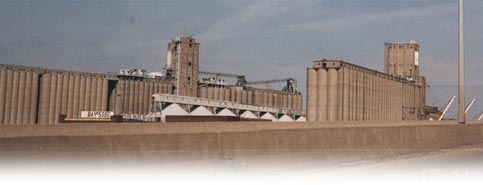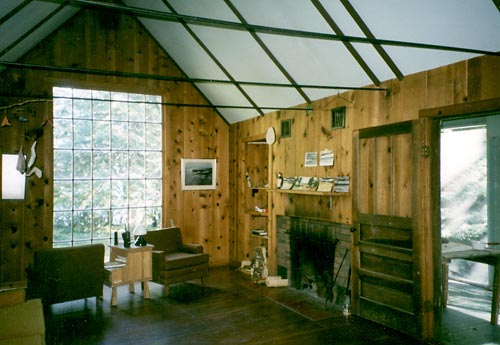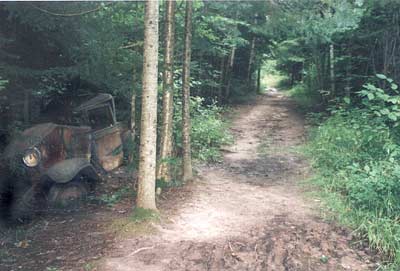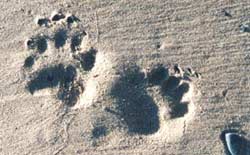APOSTLE ISLAND NATIONAL LAKESHORE

The airport in Duluth isn't big, so I can hardly miss the park ranger waiting for my arrival. Especially as he is holding a sign which reads: Kathy Hodge Kathy Hodge. In case I miss it the first time I guess. Like many of the other rangers of The Apostle Island Lakeshore, Gene is a retired volunteer. I'm also a volunteer of sorts, the Lakshore’s Artist-in-Residence. I'll live for two weeks on nearly-deserted Sand Island, 3 miles out in Lake Superior. My home will be a small cabin without electricity or running water and only a shortwave radio to communicate with the mainland. Heaven. After Gene gives me a short tour of Duluth, we head east on Route 13 which arcs up and away from the industrial waterfront where grain elevators, huge in scale, stand in rows. Like kicked off shoes, ships lay at their feet. Two hours and a grocery stop later I am deposited in Little Sand Bay to stay overnight in the Green Dorm, top bunk. A park boat will take me out to Sand Island in the morning.
But anyhow, then this. He went out and I asked him if I should go out with him and he said no, you’d better stay home and bake the bread because I had it rising in the pans. And that was the last I saw of him. He drowned. He got caught in a storm out on the lake. He never got back. He got crushed in an ice field in his boat. I suppose one and one half to two miles outside the lighthouse. It’s a pretty heavy water... I went down by the docks and saw one boat that had come in and they said “Did your Dad get in?” I said “No”. And they said he’d had engine trouble. (It was) about four in the afternoon and they said if he didn’t make it then he probably wouldn’t. I went back to the house...and the dog was pretty upset... ...the funny part was—that dog—we had found him on the ice...my brother and I...were out on the ice and saw the dog and it was over by York Island...saw the dog over there and took him and brought him home and then it was our dog. And that night my dad didn’t come back from drownin out on the lake—I’d gone to bed, I was alone in the house. I heard this awful racket on the porch and here it was the dog trying to get in. I just woke from a dream and I heard the dog and I thought it was my dad knocking at the door to get in. Then of course within the next 2-3 days I had to have him put away because I had to get out of there—I couldn’t stay. —Melvin Dahl Nov 12, 1987 interview with Carol Ahlgren

Gene and his wife Lennie walk up to my door right on schedule early Monday morning. Gene drives me to Roy's Point where we meet Dick Palm, who reminds me a bit of a 70ish John Wayne. He and Gene trade insults, in the way of men who respect each other. Susan, the ranger in charge of the artist in residence program helps as we load my baggage and 10 gallons of water into a wobbly cart and head down the dock to the boat. I’m given tips on islands living over the roar of the motor as we head to East Bay on Sand Island. Dick Palm, LaDonna Palm, Apostle Island National LakeshoreThere we are met by Dick’s wife LaDonna, who immediately invites me to dinner later that night at the little ranger station by the dock. Susan and I head up the old road pulling the cart. It's not heavy for two, but the mud and narrow planks spanning the wettest parts cause it to swerve awkwardly. Dick catches up with us and takes the handle, refusing help. After a half mile, the trail abruptly turns left. Dick’s observation that it used to continue on to the south end intrigues me, but it looks completely overgrown. We continue a short way down a narrow and mossy trail. A patch of white through the trees marks the cabin and soon we step onto a small lawn. My companions note that it needs mowing. I'm somewhat disconcerted by the presence of a maintained lawn, but the cottage is pleasantly ramshackle. A low step of weathered grey boards, a patched screened door and 5 windows rimmed with chipping black paint are on the inland side. It’s a simple building, except for a sharply peaked roof. Tacked on to one end is a screened porch. On the lake side a large 36-paned window gives a view of Superior through the trees. A picnic table, outhouse and two outbuildings are tucked into the trees nearby.

Joining the Palms and I for dinner is Liz, from the lighthouse, and her husband Carl. Liz and Carl travel from park to park in their trailer most of the year, volunteering in return for RV hookups. We make easy conversation. Dick Palm's family has a long history on Sand Island which will come to an end in 2000, when the park takes over their home. They are leaving for the season tomorrow so we make a good attempt to eat up all the food. They walk me home in the dark by flashlight.
On my first full day on the island I rearrange the furniture so I can sit by the big window and glimpse the lake. I feel a sense of belonging, unlike yesterday when I nervously paced, wondering how I would cook and wash. Now the coffee pot has been scoured and the coffee is good, as is oatmeal with fresh picked blackberries.

After breakfast I set off to explore the north corner of the island, where Superior is so wide that the other side is beyond seeing. I take the short path to the road, glancing left at the abandoned half. I am determined to follow it at some point. But today I turn right and walk the muddy half mile to the dock. On either side are very subtle ruins of the old school house, and a farm. On the right, just before the ranger house is a Model A car, sagging and buried halfway up its tires in the mud. It was left there by Gertrude Wellisch, the builder of my cabin, who used it first for transporting building supplies, then left it by the dock for anyone who needed to drive the few roads on the island. No auto travel is possible now.
She was a rugged individual that could take hardship. She used to walk from East Bay over to the lighthouse and that was over 2 miles, and she’d carry her suitcases. And so she brought her car here and had a trailer hitch on the back. And she had a cabin built...and the car was used to haul all the material for the house...afterward, why the car was just abandoned. —Bill Noring December 16, 1980 oral interview
I continue on the road past the dock and campground where kayakers sometimes pitch tents and reenter the woods. A boardwalk begins, which makes walking easy through the tangled brush of the overgrown Noring farm and orchards. In an old field the grass grows spiky and shoulder high and smells of hay in the sun. Grasshoppers leap out of my way, or in my way, with sharp hot clicks. An occasional apple tree is still bearing fruit and I pick a few. They are hard and tart.
There was a lot of apples, in those days they didn’t think of spraying. You could pick an apple off the tree anytime, like Carl and I used to do. In fact in the fall at night we’d sit under the trees and eat apples till we got sick. But they were beautiful apples and good apples. —Bill Noring December 16, 1980 oral interview

After a mile on the boardwalk I come to the long wooden stairs which lead down to Justice Bay. There you can sometimes see bear tracks in the sand. The water is as calm and clear as a swimming pool, inviting even on this cool day. The sea caves are in shadow. A thick grove of birches grow straight and tall at the edge of the sandstone cliff, their roots embedded in what is really just a cross section. Their end, when it comes, will be a sudden drop into the lake below.
[CONTINUED]